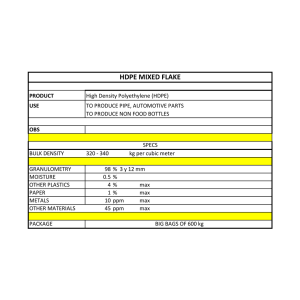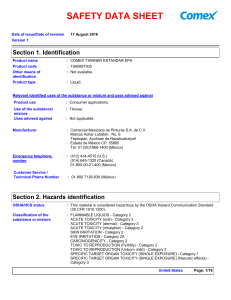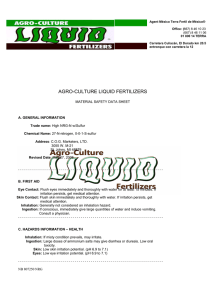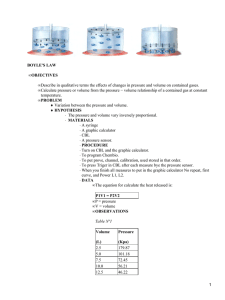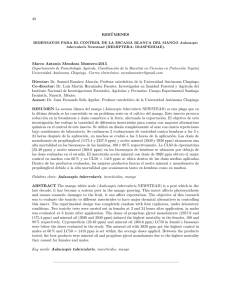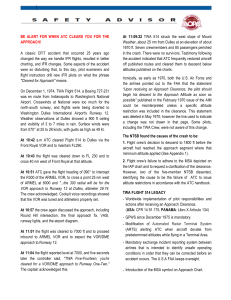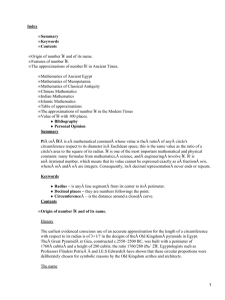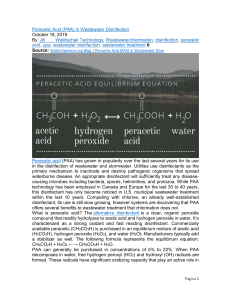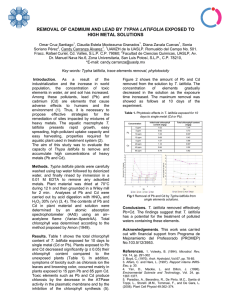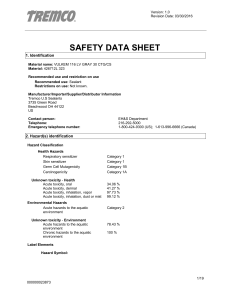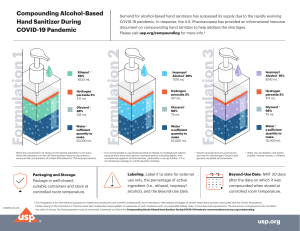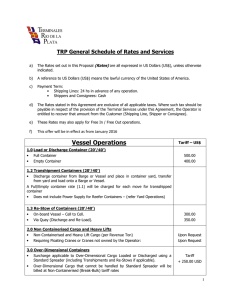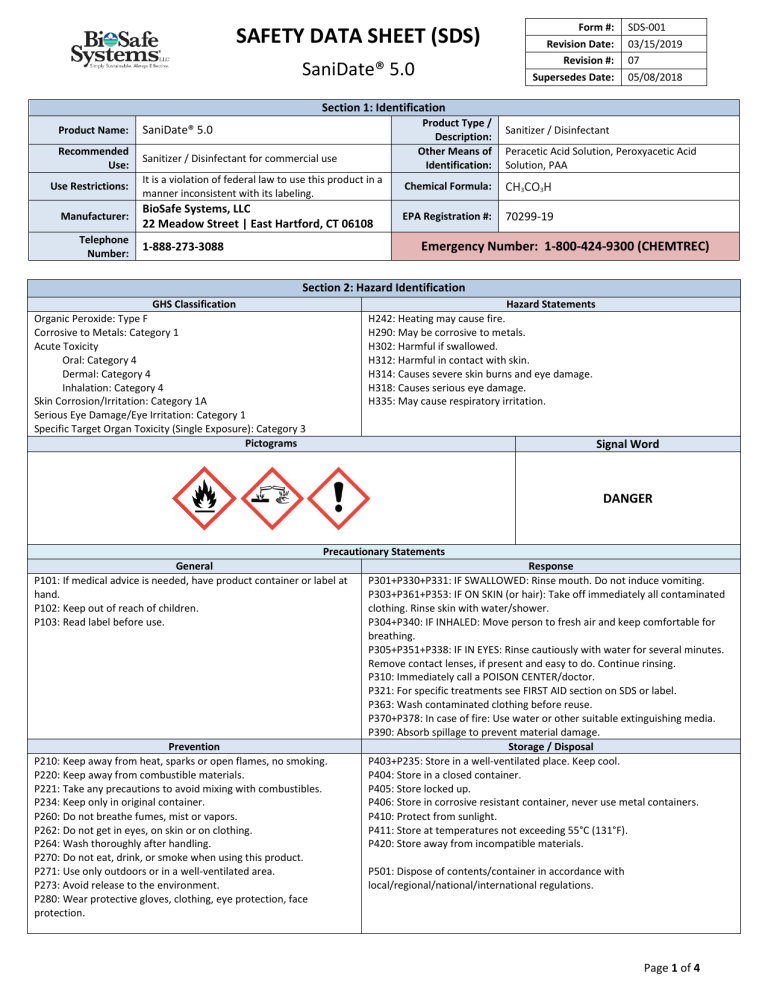
SAFETY DATA SHEET (SDS) SaniDate® 5.0 Form #: Revision Date: Revision #: Supersedes Date: SDS-001 03/15/2019 07 05/08/2018 Section 1: Identification Product Name: SaniDate® 5.0 Recommended Use: Sanitizer / Disinfectant for commercial use Use Restrictions: Manufacturer: Telephone Number: Product Type / Description: Other Means of Identification: Sanitizer / Disinfectant Peracetic Acid Solution, Peroxyacetic Acid Solution, PAA It is a violation of federal law to use this product in a manner inconsistent with its labeling. Chemical Formula: CH3CO3H BioSafe Systems, LLC 22 Meadow Street | East Hartford, CT 06108 EPA Registration #: 70299-19 Emergency Number: 1-800-424-9300 (CHEMTREC) 1-888-273-3088 Section 2: Hazard Identification GHS Classification Organic Peroxide: Type F Corrosive to Metals: Category 1 Acute Toxicity Oral: Category 4 Dermal: Category 4 Inhalation: Category 4 Skin Corrosion/Irritation: Category 1A Serious Eye Damage/Eye Irritation: Category 1 Specific Target Organ Toxicity (Single Exposure): Category 3 Pictograms Hazard Statements H242: Heating may cause fire. H290: May be corrosive to metals. H302: Harmful if swallowed. H312: Harmful in contact with skin. H314: Causes severe skin burns and eye damage. H318: Causes serious eye damage. H335: May cause respiratory irritation. Signal Word DANGER Precautionary Statements General Response P101: If medical advice is needed, have product container or label at P301+P330+P331: IF SWALLOWED: Rinse mouth. Do not induce vomiting. hand. P303+P361+P353: IF ON SKIN (or hair): Take off immediately all contaminated P102: Keep out of reach of children. clothing. Rinse skin with water/shower. P103: Read label before use. P304+P340: IF INHALED: Move person to fresh air and keep comfortable for breathing. P305+P351+P338: IF IN EYES: Rinse cautiously with water for several minutes. Remove contact lenses, if present and easy to do. Continue rinsing. P310: Immediately call a POISON CENTER/doctor. P321: For specific treatments see FIRST AID section on SDS or label. P363: Wash contaminated clothing before reuse. P370+P378: In case of fire: Use water or other suitable extinguishing media. P390: Absorb spillage to prevent material damage. Prevention Storage / Disposal P210: Keep away from heat, sparks or open flames, no smoking. P403+P235: Store in a well-ventilated place. Keep cool. P220: Keep away from combustible materials. P404: Store in a closed container. P221: Take any precautions to avoid mixing with combustibles. P405: Store locked up. P234: Keep only in original container. P406: Store in corrosive resistant container, never use metal containers. P260: Do not breathe fumes, mist or vapors. P410: Protect from sunlight. P262: Do not get in eyes, on skin or on clothing. P411: Store at temperatures not exceeding 55°C (131°F). P264: Wash thoroughly after handling. P420: Store away from incompatible materials. P270: Do not eat, drink, or smoke when using this product. P271: Use only outdoors or in a well-ventilated area. P501: Dispose of contents/container in accordance with P273: Avoid release to the environment. local/regional/national/international regulations. P280: Wear protective gloves, clothing, eye protection, face protection. Page 1 of 4 SAFETY DATA SHEET (SDS) SaniDate® 5.0 Form #: Revision Date: Revision #: Supersedes Date: SDS-001 03/15/2019 07 05/08/2018 Section 3: Composition / Information on Ingredients Components Hydrogen Peroxide Peroxyacetic Acid Acetic Acid CAS-No 7722-84-1 79-21-0 64-19-7 % Composition (w/w) 16.0 – 26.0% 4.2 – 6.0% 8.0 – 12.0% Section 4: First-Aid Measures Eye Contact: Skin Contact: Ingestion: Inhalation: Notes to Physician: In case of eye contact, remove contact lenses and rinse immediately with plenty of water, also under the eyelids, for at least 15 minutes. See a medical doctor immediately. Wash off immediately with plenty of water for at least 15 minutes. Remove contaminated clothing and shoes. Seek immediate medical attention/advice. Rinse mouth with water. Never give anything by mouth to an unconscious person. Call a physician immediately. If swallowed, do not induce vomiting - seek medical advice. Remove to fresh air and keep at rest in a position comfortable for breathing. If not breathing, give artificial respiration. Consult a physician if necessary. This product can be corrosive to skin, eyes, and mucous membranes. Careful gastric lavage should be considered. Observations may be warranted. Treatment is controlled removal of exposure followed by supportive care. Section 5: Fire-Fighting Measures Suitable Extinguishing Media: Water spray. Unsuitable Extinguishing Media: Carbon dioxide, alcohol foam, dry chemical. Heavy water stream can spread fire. Combustion Products: Corrosive vapors, acetic acid, carbon oxides. Unusual Fire and Explosion Product is not flammable but during a fire, product can decompose and generate oxygen which can initiate or Hazards: promote combustion. Protective Full chemical protection suits and boots (rubber or PVC) and self-contained breathing apparatus. Cordon the area to keep out all Equipment for unnecessary personnel. Keep upwind. Use large quantities of water spray to fight fire. Cool containers / tanks with water spray. If Firefighters: safe to do, move product away from fire to secure area. Eliminate all possible sources of ignition and remove flammable material. Section 6: Accidental Release Measures Personal Precautions: Emergency Procedures: Ensure adequate ventilation. Avoid inhalation, ingestion and contact with skin and eyes. Ensure clean-up is conducted by trained personnel. Personnel should wear appropriate protective equipment. Remove all sources of ignition. Keep people away from and upwind of spill/leak. If facing concentrations above exposure limits personnel shall wear certified respirators. Environmental Precautions: Prevent undiluted spillage from entering sewers, basements or watercourses. Methods and Dike to collect large liquid spills. Contain spills with earth or sand or inert absorbent. Stop leak and contain spill if this can be Material for done safely. Dilute with large quantities of water. If safe to do so, move product to secure area. Control runoff and isolate Containment and discharged material for proper disposal. Do not seal waste material, do not use textiles, tissues, saw dust or combustible Clean-Up: materials to clean the spill. Do not return product to the original storage container/tank due to risk of decomposition. Section 7: Handling and Storage Handling: Wear protective gloves/eye protection/face protection/body, skin protection. Do not eat, drink, or smoke when using this product. Wash thoroughly after handling. Avoid breathing fumes/mist/vapors. Use only outdoors or in a well-ventilated area. Storage: Store in cool, ventilated area. Keep away from heat. Keep only in original container. Protect from sunlight. Store at temperatures not exceeding 30°C (86°F) for product quality. Do not store near combustible materials. Incompatible Materials: Oxidizing agents, strong reducing agents, combustible materials, heavy metals. Compatible Materials: 304L Stainless Steel, 316L Stainless Steel, Passivated Aluminum; High Density Polyethylene (HDPE), Polyvinyl Chloride (PVC) Section 8: Exposure Controls / Personal Protection Component Acetic Acid Hydrogen Peroxide Peracetic Acid Components with Workplace Control Parameters ACGIH NIOSH TWA: 10 ppm TWA: 25 mg/m³ - 8 hours. STEL: 15 ppm TWA: 10 ppm - 8 hours. IDLH: 50 ppm TWA: 1 ppm TWA: 1.4 mg/m³ - 8 hours. TWA: 1 ppm - 8 hours. IDLH: 75 ppm STEL: 0.4 ppm OSHA TWA: 25 mg/m³ - 8 hours. TWA: 10 ppm - 8 hours. TWA: 1.4 mg/m³ - 8 hours. TWA: 1 ppm - 8 hours. Page 2 of 4 SAFETY DATA SHEET (SDS) SaniDate® 5.0 Engineering Controls: General Hygienic Practices: Respiratory Protection: Eye / Face Protection: Hand Protection: Skin / Body Protection: Form #: Revision Date: Revision #: Supersedes Date: SDS-001 03/15/2019 07 05/08/2018 Ensure adequate ventilation. Emergency eye wash stations / emergency showers should be available in the immediate vicinity of any potential exposure. Do not eat, drink or smoke during use. Wash hands immediately after handling the product. Personal Protective Equipment Use NIOSH-approved air-purifying or supplied air respirator where airborne concentrations of vapor or mist are expected to exceed exposure limits. Recommended respirators are those with an organic vapor / acid gas cartridge. Chemical resistant goggles or face shield if splashes are expected to occur. Rubber/latex/neoprene or other suitable chemical resistant gloves. Do not use leather or cotton gloves. Wear non-combustible clothing and footwear (PVC, neoprene, nitrile or natural rubber). Section 9: Physical and Chemical Properties Appearance: Physical State: Melting Point: Flash Point: Vapor Pressure: Evaporation Rate: Relative Density: Clear, colorless liquid. Liquid. NA NA 22 mm Hg (30°C) NA NA Odor: Pungent, vinegar-like. pH: <1.5 Freezing Point: -30°C (-22°F) Flammability: NA Vapor Density: NA Auto-Ignition NA Temperature: Partition Coefficient n-octanol / water: NA Odor Threshold: Specific Gravity: Boiling Point: Flammability Limits: Solubility: Decomposition Temperature: Viscosity: NA 1.10 – 1.12 g/cm3 NA NA Complete. SADT > 55°C (131°F) NA Section 10: Stability and Reactivity Reactivity: Stability: Conditions to Avoid: Incompatible Materials: Hazardous Decomposition Products: Reactive and oxidizing agent, organic peroxide. Stable under recommended storage conditions. Open flames/heat sources, temperatures above 55°C (131°F), direct sunlight, combustible materials. Acids, bases, reducing agents, organic materials, soft metals, salts of metals. Thermal decomposition generates corrosive vapors, acetic acid and oxygen which supports combustion. Section 11: Toxicological Information Oral LD50 Rat: Condition Eye Contact: Skin Contact: Inhalation: Ingestion: Acute Toxicological Data Dermal LD50 Rat: 1957 mg/kg Symptoms and Effects Acute Effects Causes serious eye damage. None. Causes severe skin burns. None. May cause respiratory tract irritation. None. Probable mucosal damage. None. 1026-1780 mg/kg Inhalation LC50 Rat: 4 hr – 4080 mg/m3 Chronic (Delayed) Effects Section 12: Ecological Information Duration Species Value Ecotoxicity: 96 hr LC50 Oncorhynchus mykiss (rainbow trout) 0.53 mg/L 21 d NOEC Daphnia magna 0.05 mg/L Persistence and Degradability: Peracetic acid is completely miscible with water. Product is biodegradable due to chemical properties. Bioaccumulative Potential: Does not bioaccumulate. Mobility in Soil: Non-significant adsorption soil degradation, >99% in 20 minutes. Results of PBT & vPvB: This mixture contains no substance considered to be persistent, bioaccumulating nor toxic (PBT). Other Adverse Effects: None known. Section 13: Disposal Considerations Waste from Residues and Unused Product: Contaminated Container Disposal: Dispose of waste material in accordance with all local, regional, national, provincial, territorial and international regulations. Do not reuse or refill containers. Triple rinse empty containers with clean water. Clean and empty containers should be taken to an approved waste handling site for recycling or disposal. Page 3 of 4 Form #: SAFETY DATA SHEET (SDS) Revision Date: Revision #: Supersedes Date: SaniDate® 5.0 SDS-001 03/15/2019 07 05/08/2018 Section 14: Transport Information UN Number DOT TDG IMDG Hazard Class (Subsidiary) 5.2 (8) 5.2 (8) 5.2 (8) UN Proper Shipping Name 3109 Organic peroxide type F, liquid (Peroxyacetic Acid, Type F, Stabilized, <43%) 3109 Organic peroxide type F, liquid (Peroxyacetic Acid, Type F, Stabilized, <43%) 3109 Organic peroxide type F, liquid (Peroxyacetic Acid, Type F, Stabilized, <43%) Special Precautions: Shipping container: UN certified vented polyethylene Packing Group NA NA IATA Marine Pollutant Not permitted for shipment by air. No Shipping Placards: Section 15: Regulatory Information US EPA CERCLA Hazardous Substances Acetic Acid 5000 lbs. Hydrogen Peroxide NA Peracetic Acid NA TSCA Inventory List Acetic Acid Yes Hydrogen Peroxide Yes Peracetic Acid Yes Clean Water Act 5000 lbs. NA NA SARA Title III Sec 311 / Sec 312 Hazard Category Acetic Acid NA Hydrogen Physical: Oxidizer Peroxide Health: Acute Toxicity; Skin Corrosion or Irritation; Serious Eye Damage or Eye Irritation; Specific target organ toxicity Peracetic 500 lbs. 500 lbs. Physical: Organic Peroxide; Corrosive to Metals Acid Health: Acute Toxicity; Skin Corrosion or Irritation; Serious Eye Damage or Eye Irritation; Specific target organ toxicity *Hydrogen Peroxide Reportable Quantity only applies to concentrations > 52% Sec. 302 TPQ. NA 1000 lbs. Sec 304 RQ. NA 1000 lbs.* NFPA 704 Rating Health: HMIS Rating Health: Uniform Fire Code (NFPA 400) California Prop 65 EPA 3 Flammability: 1 3 Flammability: 1 Organic Peroxide: Class IV, Liquid Reactivity: Physical: 1 1 Special: PPE: Sec 313 NA NA Clean Air Act Threshold Qty. NA NA Yes 10000 lbs. OX (Oxidizer) Recommended. This product does not contain any substances known to the state of California to cause cancer, developmental and/or reproductive harm. This product is a registered pesticide with the United States Environmental Protection Agency and is subject to EPA labeling requirements under the Federal Insecticide, Fungicide, and Rodenticide Act (FIFRA). These requirements may differ from the classification criteria and hazard information required for a safety data sheet under the Global Harmonized Systems (GHS), and for workplace labels of non-pesticide chemicals. It is a violation of Federal law to use this product in a manner inconsistent with its labeling. Always refer to product label for further precautionary information and use directions. Section 16: Other Information According to Federal Register / Vol. 77, No. 58 / Monday, March 26, 2012 / Rules and Regulations To the extent of our knowledge, the information herein is accurate as of the date of this document. However, neither BioSafe Systems nor any of its affiliates make any warranty, expressed or implied, or accept any liability relating to the information or its use. The information is for use by technically skilled persons at their own discretion and risk. This is not a license or a patent. The user alone must finally determine suitability of any information or material for any contemplated use, the manner or use and whether any patents are infringed. Always read and follow label directions. For additional information, call us toll-free at 1.888.273.3088 or visit www.biosafesystems.com ©2019 BioSafe Systems, LLC. Page 4 of 4
